Jenny Watches may be a Brand you’ve Never Heard of, but it’s left a Significant Mark on Dive Watch History
A relatively unknown brand with rich dive-watch history and several milestones to be explained.
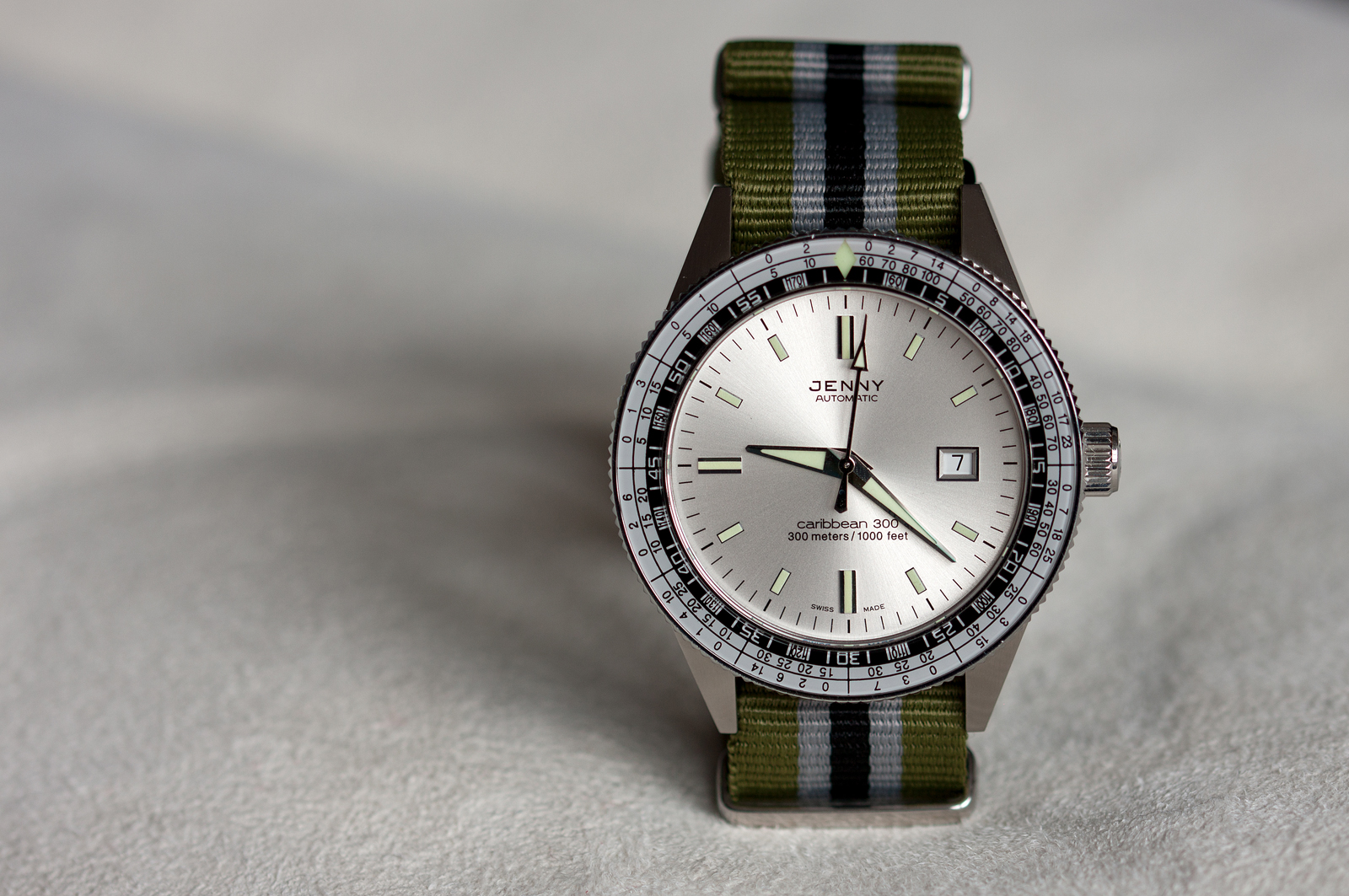
We’ve covered many Doxa SUB dive watches over the years, including the Limited Edition Doxa Mission 31 SUB Professional and Doxa SUB 300 Searambler ‘Silver Lung’ Reissue. Founded in 1889 in Le Locle, Switzerland by Georges Ducommun, Doxa has a storied history that started with an 8-day watch movement in 1908 for car and plane dashboards. However, it was the Doxa Sub, introduced in 1966, that led to the company’s current reputation as a dive watch specialist. Doxa, however, has a sister brand, JENNY Watches (pronounced as yen-ny), that produced dive watches from day one. Let’s take a closer look at Jenny Watches, the relatively unknown brand that beat all of the major players to 1,000 metres of depth over 50 years ago.

Established in 1963 as JENNY & Cie S.A. in Lengnau, Switzerland (by Paul G. Jenny, son of original company founder Gustav Jenny), it was the first brand to produce a 1,000-metre water-resistant dive watch, known as the JENNY Caribbean 1000. In addition to its own portfolio, it also produced watches for competing brands, including Fortis, Ollechs & Wajs and Aquadive, among others. Doxa became a victim of the quartz crisis of the 1980s but was bought by the Jenny family in 1997 and Sub dive watches were again produced under the Doxa brand. Production of watches under the Jenny brand also stopped for many years but was revived in 2012/2013 with the Jenny Caribbean 300 to mark the 50th Anniversary of the company’s founding. Jenny Watches is certainly more obscure than brands like Omega and TAG Heuer, but with patents on both a one-piece case construction (MONOBLOC Caribbean Triple Safe) and a unique decompression bezel design, it’s a force to be reckoned with in the world of dive watches.
The latest Jenny Caribbean 300 is a reproduction of its first ever dive watch, the Jenny Caribbean 700. That watch, as the name implies, was water-resistant to 700 metres. It was 39.5mm in diameter, which is a bit smaller than the new watch’s 42mm case diameter (44mm wide, including the bezel). However, the new watch is still faithful to the original design with an all brushed stainless steel case and wide bezel (3.5mm high). That bezel also has a unique design that matches the original (now under a modern sapphire crystal). Unlike your typical dive watch that displays the elapsed time, the Jenny Caribbean 300 has technical information about proper decompression. In general terms, it tells a diver how much time is needed to decompress based on the depth of the dive and amount of time underwater. Figures are given for multiple zones as a diver safely surfaces. Although cool looking and pertinent for advanced divers, the majority will probably never actually use the bezel for its intended purpose. If you look closely, however, there are also numbers for elapsed time mixed in there. While an interesting and innovative watch today, the original Jenny Caribbean 700 led to significant, historical dive watches with the remarkable Jenny Caribbean 1000 and Jenny Caribbean 1500.
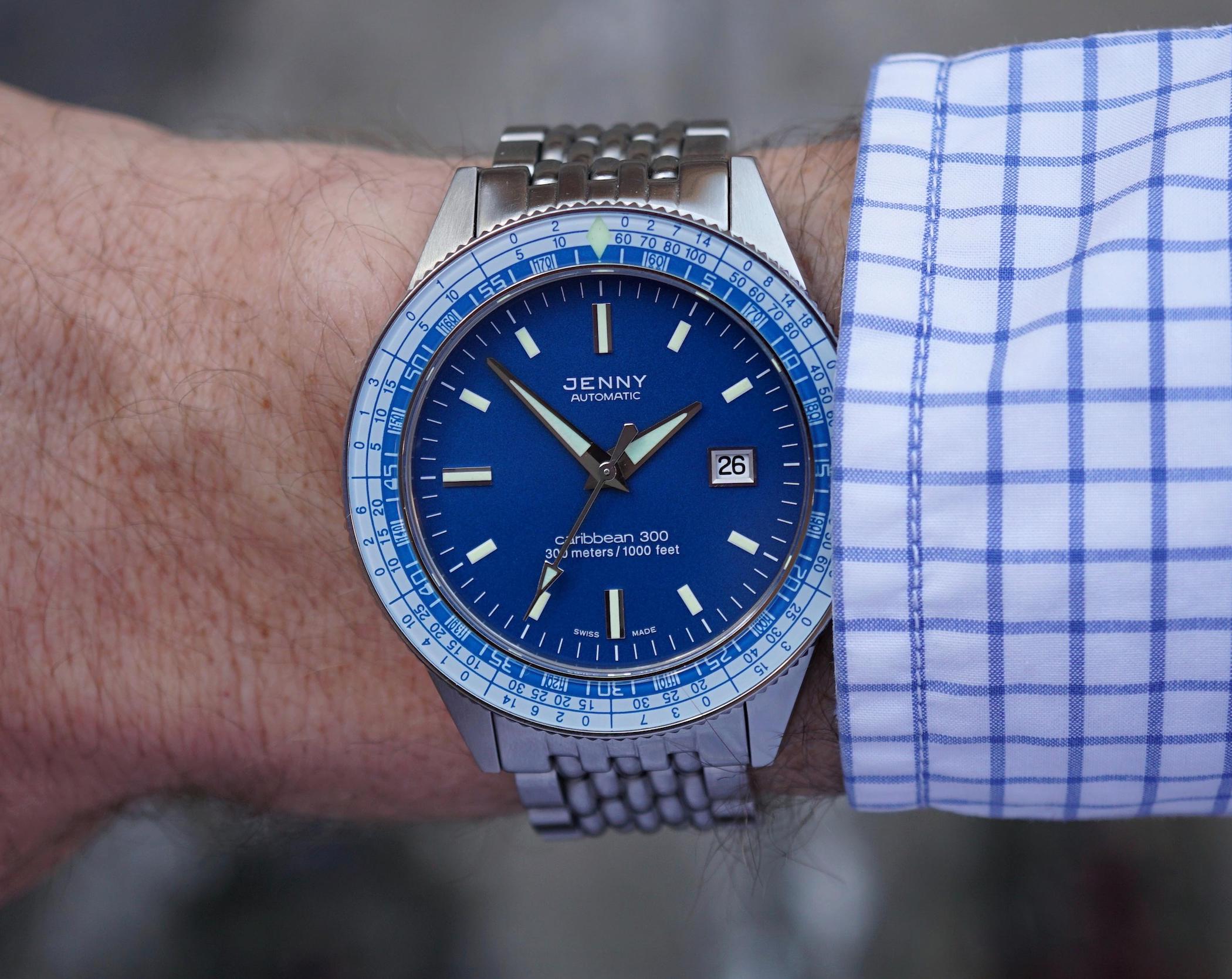
The majority of scuba divers never go below 130 feet (39.624 metres) as anything deeper requires decompression stops to allow the body to readjust from extreme water pressures. It’s dangerous and only the most experienced divers (saturation divers) should attempt it. In fact, the deepest dive ever was achieved by Ahmed Gabr, who set a record at 1,090 feet. So, it begs the question, “why does a watch need to go 1,500 feet down?” I recently covered the Kalmar 2x OceanicTime 10 Miles edition that can go an absurd 10 miles down, which is literally deeper than the deepest part of the ocean by about 3 miles. My answer to that one was, “why not?” It demonstrates an innovative approach to design and engineering prowess and also has an undeniable novelty factor.
Most buyers of Lamborghinis and Ferraris will never come close to reaching the capable top speeds, but they all like knowing their cars can achieve them. That same sentiment applies here. Owning a watch that can survive a trip to the Challenger Deep, the deepest part of the ocean at 6.9 miles (11.10km), is admittedly awesome. Back in the 1960s, a dive watch that could safely reach 1,000 feet (304.8m) was an incredible achievement and something that major brands like Rolex and Omega couldn’t yet accomplish. For example, the Rolex Submariner could only reach 660 feet at the time and the brand was still working on its Sea-Dweller that would ultimately reach 2,000 feet in 1967. The Jenny Caribbean 1000 was available in 1964.
The Jenny Caribbean 1000 had a patented “MONOBLOC Triple Safe” design (Brev. 5292/68 triple safe) that included a one-piece case and triple seals. The case was 40mm in diameter and 16mm in height (with a 5mm thick acrylic crystal), and the screw-down crown also utilized triple seals. Because of this record-breaking depth rating, the watch also had a (soon to be) patented decompression bezel (US Patent no.3,613,354) that allowed deep water divers to track decompression stops on the way up. Paul and his two brothers, Hans and Werner, applied for this patent in 1969. As mentioned earlier, most divers (and buyers) would never go below 130 feet, but this unidirectional bezel was more than a gimmick as the watch was well suited for the relative handful of saturation divers that would. Both bezel and dial colour options included silver, orange, yellow and blue. Following this deepest of dive watches was the Jenny Caribbean 1500, which could descend another 500 feet (by enlarging the case to 42mm in diameter). With both dive watches, JENNY & Cie S.A. established itself as an innovative leader in the field.
Similar to Chronographe Suisse, a company that supplied watches to a variety of brands that added their name to the dials, Jenny supplied cases and parts (and finished watches) to brands like Philip Watch, Jaques Monnat, Ollech & Wals, Fortis, Montresor, Milus, Heuralp and many more. And like Chronographe Suisse, Jenny’s supplied watches usually retained attributes that made it clear it was still a “Jenny” dive watch. For example, a Dugena piece had its own branding on the dial and a conventional diver’s bezel, but also had Caribbean 1000 printed on the dial and Jenny’s fish logo on the caseback.
Many other brands retained the Jenny fish logo on the crown and case back as well. It was simply good business and profitable to supply competitors, no different than Samsung supplying OLED displays to Apple, and Jenny Watches did it for several decades. It’s also a tradition that started with original company founder Gustav Jenny, who manufactured watches to be adopted by other brands before Jenny even produced its own. He was kind of like a Swiss version of Italian car designer Pininfarina, although the innovation and technology provided by Jenny Watches went beyond just exterior design. Companies could claim water-resistance to 1,000 feet (and eventually 1,500 feet) without expensive in-house research and development, and many never had the resources to accomplish even half of that depth rating on their own.
Jenny Watches has remained an independent and family-owned business since its founding, which is increasingly rare for a Swiss watch company. Original family members from the company’s early days in the 1960s were part of the brand’s relaunch in 2012, the year that Jenny Watches introduced its latest Caribbean 300. It’s larger than the original Caribbean 700 (42mm vs 39.5mm), but is a direct descendant of that original piece nonetheless. More contemporary touches to the 316L stainless steel case include a slimmer 12.3mm height, screw-back instead of the one-piece case design (it’s only rated at 300m after all) and sapphire crystals protecting both the dial and bezel insert. The Caribbean 300 has five different color options, each limited to 500 watches. Options include blue, silver, black or orange dials with orange, yellow or white bezels.
The beating heart in the new Jenny Caribbean 300 is a high-grade Swiss automatic ETA 2824-2 cailbre. It has 25 jewels, beats at 28,800vph (4Hz) with a 42-hour power reserve. Functions include hours, minutes, hacking seconds and a quick-set date at 3 o’clock. The ETA 2824-2 is a proven workhorse and seen in popular, accessible brands like Hamilton and many others. Movements in early Caribbean 700, 1000 and 1500 watches varied, but were all Swiss and many were ETA calibres. Most European models had movements with 25 jewels, but if you find one with 17 jewels, it was most likely exported to the United States. This was a result of higher import duties on movements with more than 17 jewels as they were considered luxury items at the time.
All Jenny Caribbean 300 models (sold via sister brand Doxa Watches) have a holiday sale price of USD 590 (from USD 990) and can be purchased at the Doxa website. Use coupon code “BFJENNY” at checkout to receive the USD 400 discount. The Caribbean 300 comes with a one-year limited warranty and Jenny rubber strap with signed stainless steel buckle (fits wrists from 6 to 10 inches). An optional stainless steel bracelet is also available.
Live photos from uhrforum.de and www.watchpatrol.net

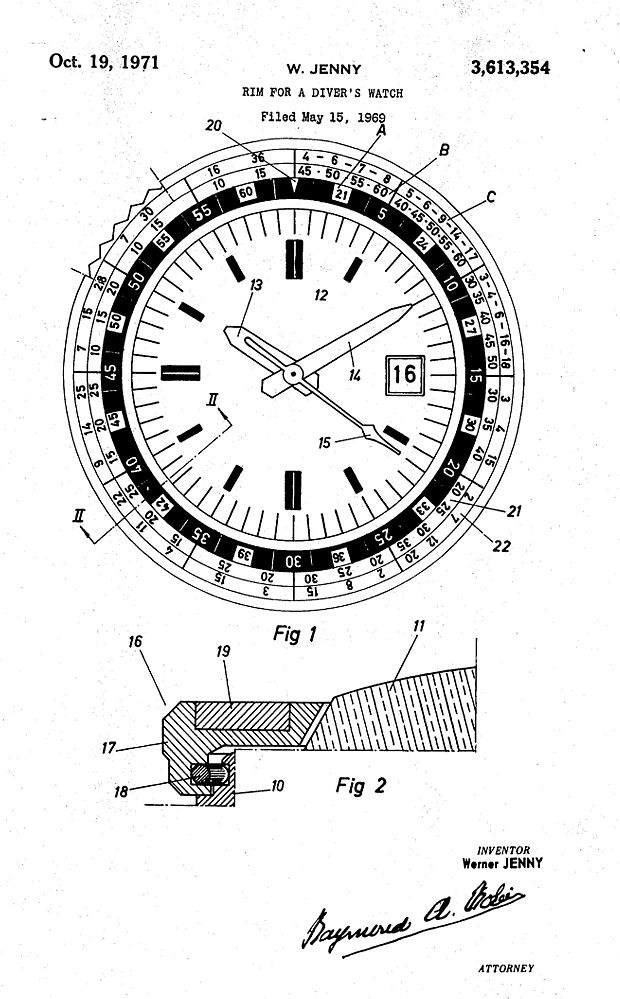
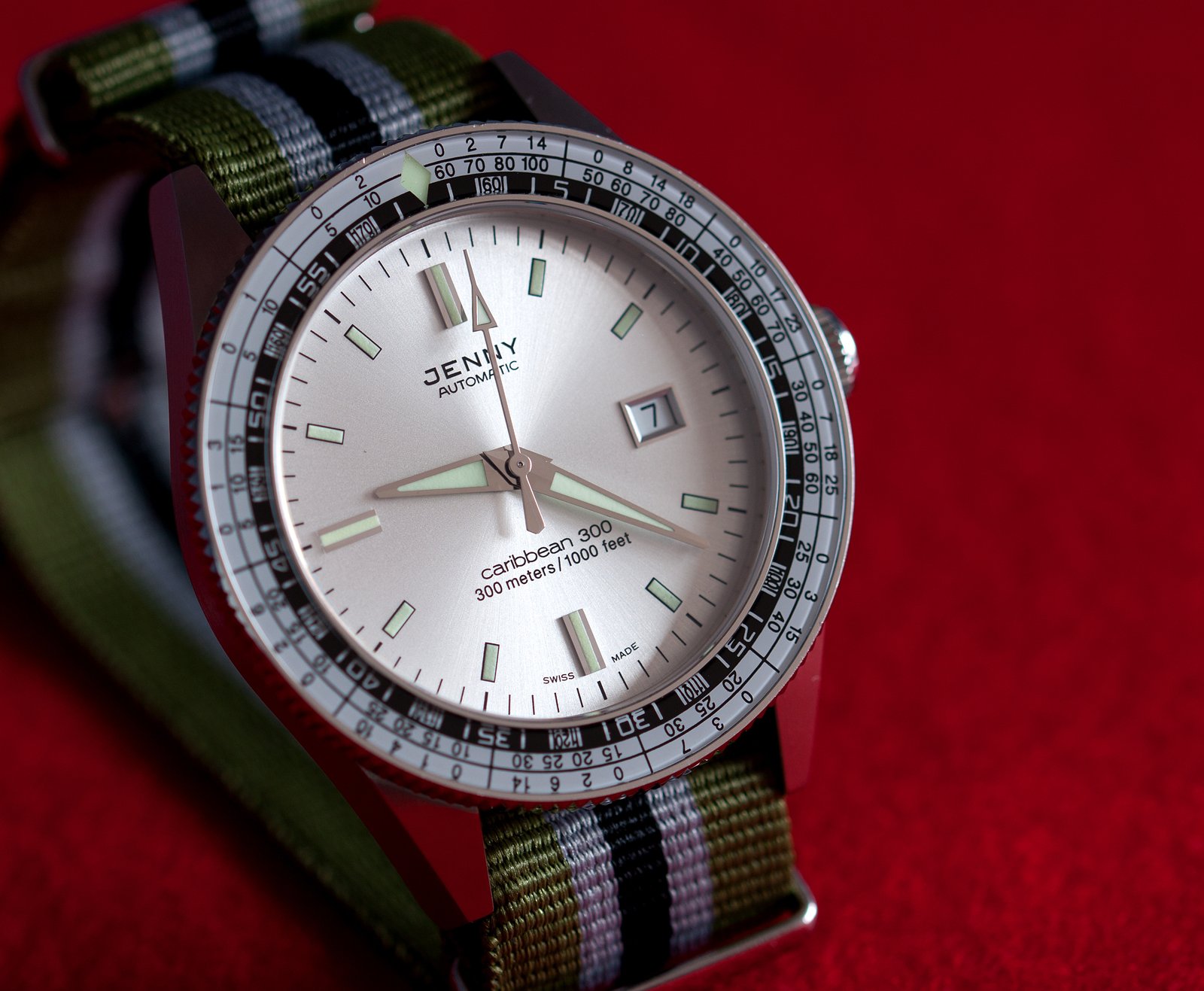
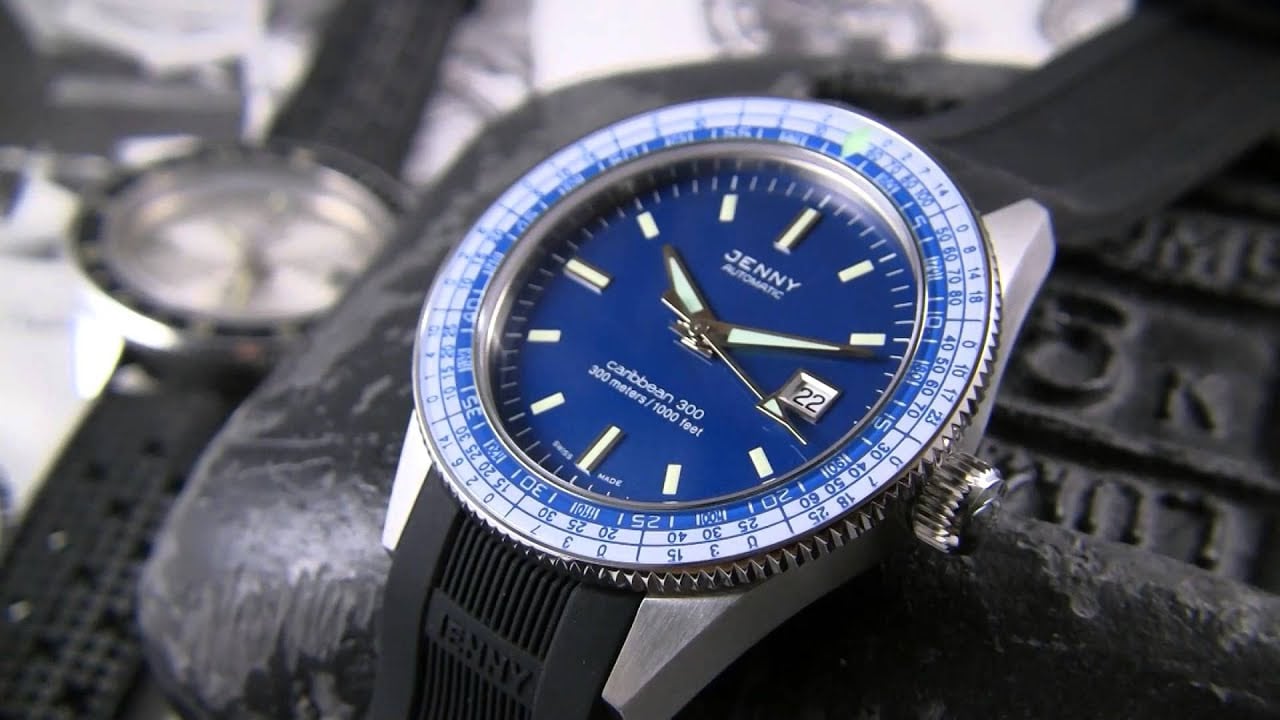
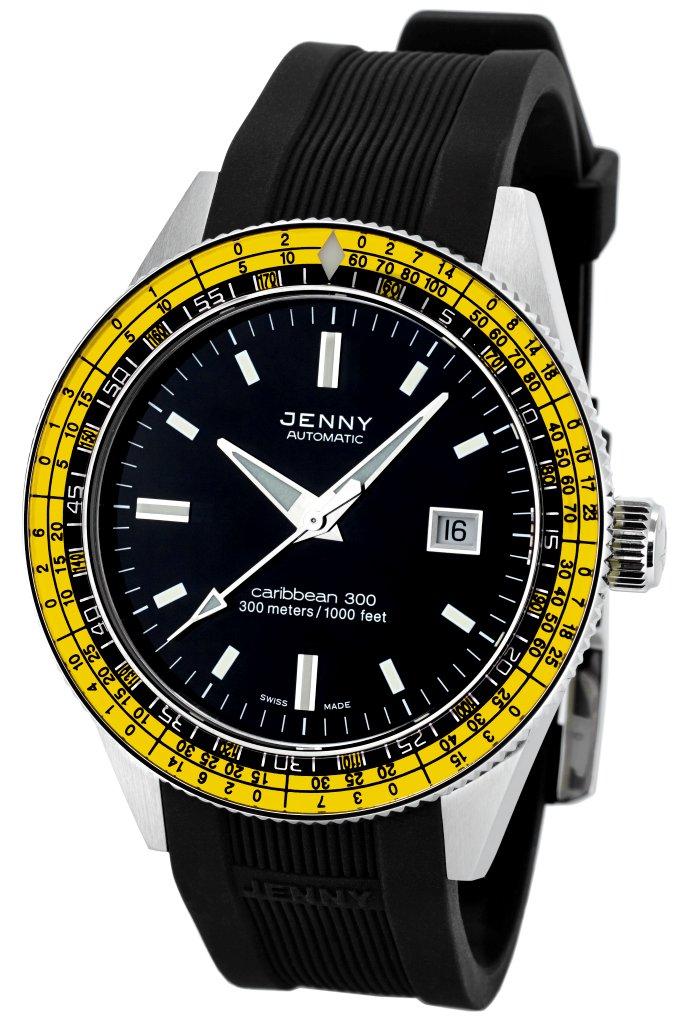


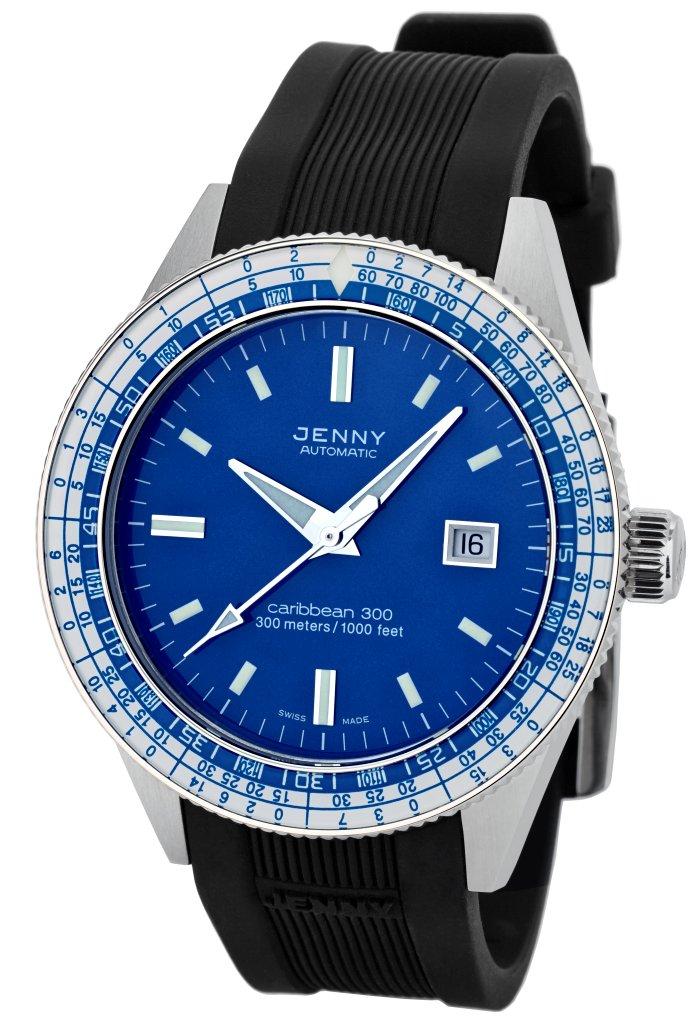




6 responses
Maybe it’s just me, but I have zero interest buying a watch that says “Jenny” on the dial.
The history of this watch is very cool, and I see the name as a bit of dive watch firsts. Plus it’s a beautiful piece. And a genuine tool watch. I was thrilled to have picked up a silver dial using the promo code provided in the article. I’ve looked at the site again and happy to see the watch has been selling since I made my purchase and three colors have now sold out.
I was disappointed the beads of rice bracelet was sold out so early on, only the blue dial was sold out then, and the company was not going to restock. I was interested in buying a Doxa bracelet but had to call to find out which one would fit and never heard back. I do wish the website included more photos of the watch and movement. Granted, theirs a level of confidence in not showing more images and specifications, but the lug width isn’t even provided and I can’t determine which bracelet from the Doxa line might be a fit. I will have to follow up on that, as I much prefer the bracelet.
I’m disappointed that after 2 separate re-assurances from Doxa that my movement would “settle down” (wtf ?) the watch is till running 20 seconds fast per day. When I complained (again !) I got no reply. I wouldn’t trust these people again.
I am not really a dive watch fan, however it should be noted that Jenny have made many fine watches which I enjoy buying at very fair prices. The Jenny family should produce more though I suspect Doxa is keeping them busy.
Do you know what happened to Peter Jenny, Werners son? I knew him very well in the early 70’s and often went to the Biel works.
Peter became a teacher.
I am the granddaughter of (Peter) Werner, who is the original keeper of the inventors patent showed above. Very proud of my grandfather for inventing a watch that could dive that deep! 😉